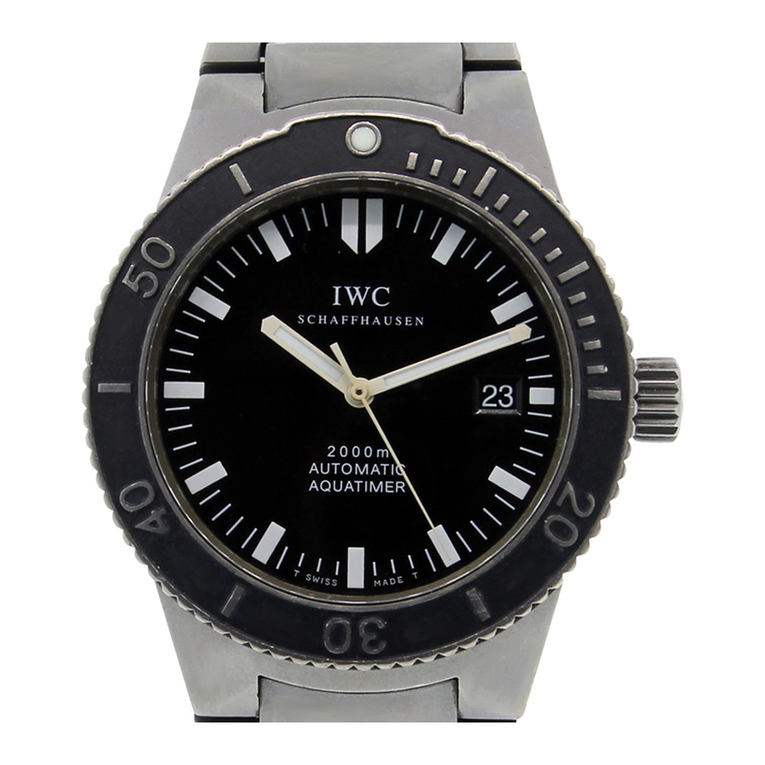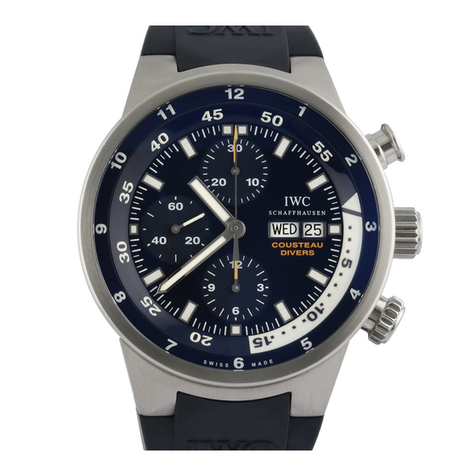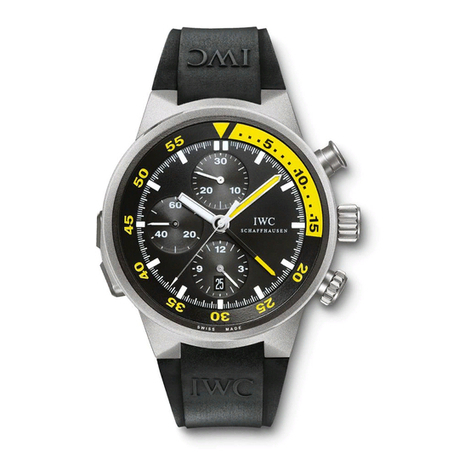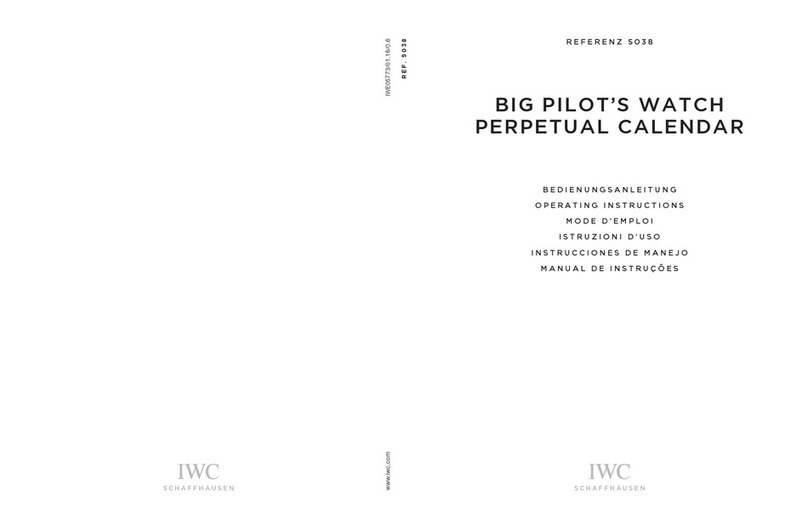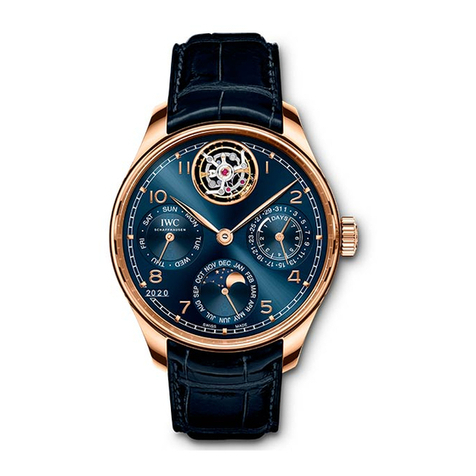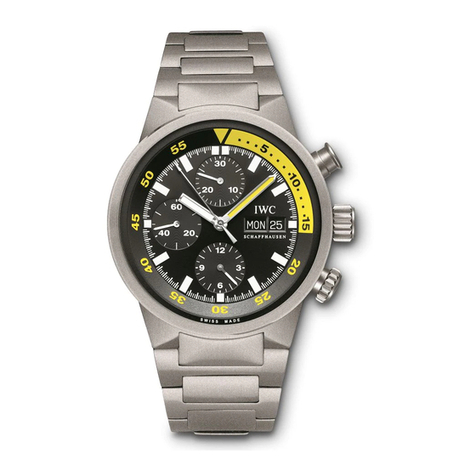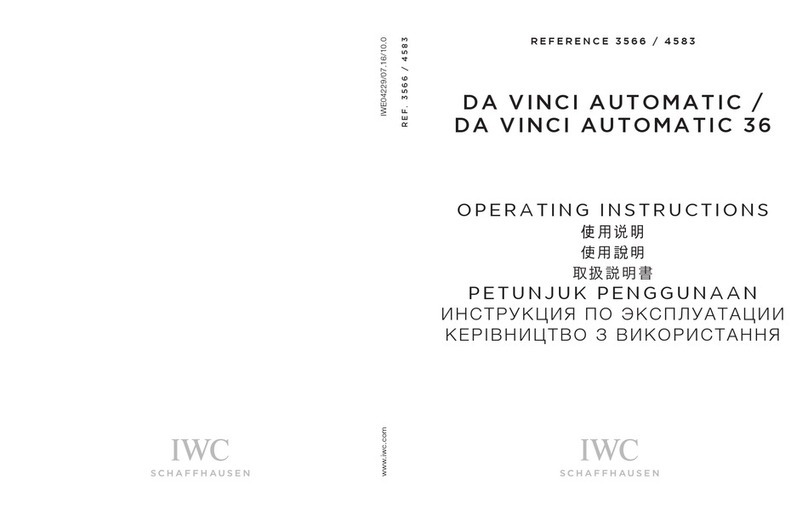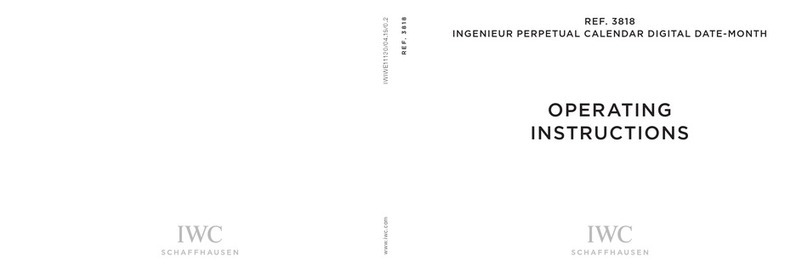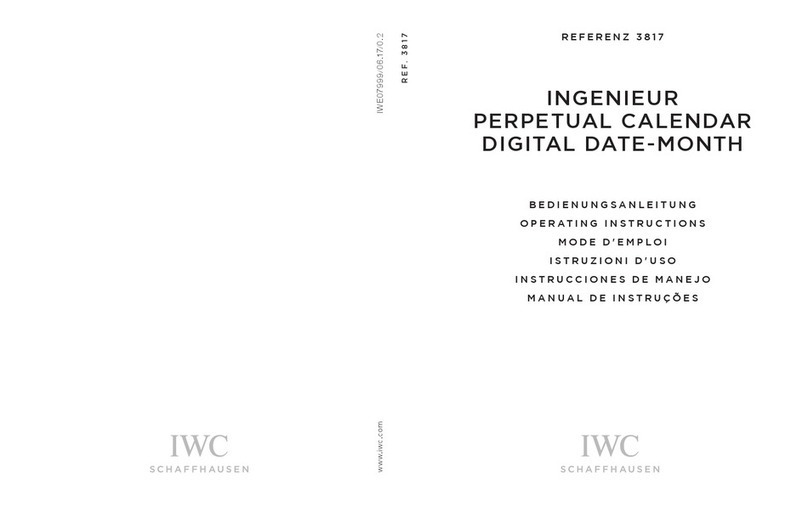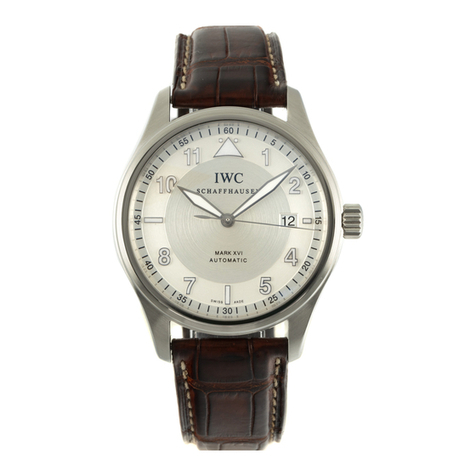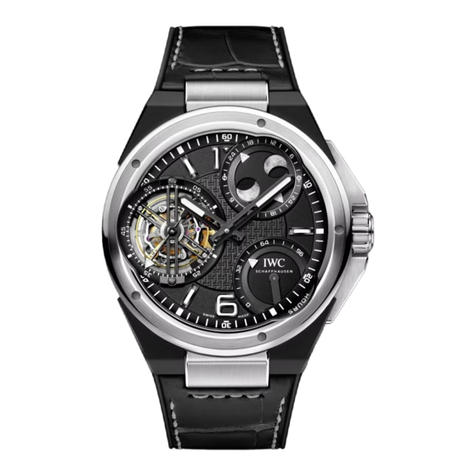
PILOT’S WATCH AUTOMATIC SPITFIRE PILOT’S WATCH AUTOMATIC SPITFIRE
— 14 — — 15 —
HINWEIS ZU MAGNETFELDERN
Aufgrund der immer höheren Verbreitung von sehr starken Magneten aus Seltenerdlegierungen
(beispielsweise Neodym-Eisen-Bor) in den letzten Jahren – diese kommen u.a. in Gegenständen
wie Lautsprechern und Mobiltelefonen sowie in Verschlüssen von Schmuck und Handtaschen vor–
können mechanische Uhren beim Kontakt mit solchen Magneten magnetisiert werden. Dieser Vorgang
kann zu einer permanenten Gangabweichung Ihrer Uhr führen, die nur durch eine fachmännische
Entmagnetisierung behoben werden kann. Wir empfehlen Ihnen, Ihre Uhr nicht in die Nähe solcher
Magnete zu bringen.
Uhren mit Weicheisen-Innengehäuse bieten einen höheren Schutz gegen Magnetfelder und über-
treffen die Forderung der DIN-Norm 8309 um ein Vielfaches. Dennoch kann es auch hier in der
unmittelbaren Umgebung von sehr starken Magneten zu einer Magnetisierung des Werks kommen.
Wir empfehlen Ihnen daher, auch Uhren mit Weicheisen-Innengehäuse nicht in direkten Kontakt mit
starken Magneten zu bringen.
Im Falle einer plötzlichen Veränderung der Ganggenauigkeit wenden Sie sich bitte an einen autori-
sierten IWC-Fachhändler (Official Agent), um Ihre Uhr auf Magnetismus prüfen zu lassen.
DIE WASSERDICHTHEIT
Die Wasserdichtheitsangabe erfolgt bei IWC-Uhren in bar und nicht in Metern. Meterangaben, wie sie
sonst häufig in der Uhrenindustrie zur Angabe der Wasserdichtheit verwendet werden, können aufgrund
der oftmals verwendeten Testverfahren nicht mit der Tiefe eines Tauchgangs gleichgesetzt werden.
Meterangaben lassen deshalb auch keine Rückschlüsse auf die tatsächlichen Gebrauchsmöglich-
keiten bei Feuchtigkeit, Nässe und im bzw. unter Wasser zu. Gebrauchsempfehlungen im Zusammen-
hang mit der Wasserdichtheit Ihrer Uhr finden Sie im Internet unter www.iwc.com/water-resistance.
Gerne informiert Sie auch Ihr autorisierter IWC-Fachhändler (Official Agent).
Um eine einwandfreie Wasserdichtheit Ihrer Uhr sicherzustellen, muss diese mindestens einmal jährlich
durch eine IWC-Servicestelle geprüft werden. Eine solche Prüfung muss auch nach aussergewöhn-
lichen Belastungen durchgeführt werden. Werden diese Prüfungen nicht ordnungsgemäss durchge-
führt oder wird die Uhr von nicht autorisierten Personen geöffnet, so lehnt IWC jegliche Garantie- oder
Haftungsansprüche ab.
Empfehlung: Nach jedem Öffnen und Service Ihrer IWC-Uhr muss Ihr autorisierter IWC-Fachhändler
(Official Agent) wieder eine Wasserdichtheitsprüfung durchführen.


